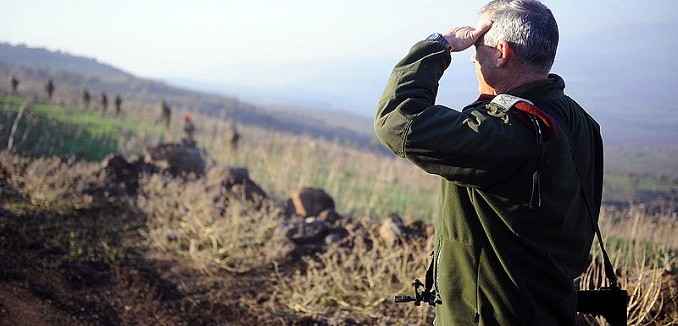Gunfire from across the Syrian border struck Israeli army vehicles over the weekend, triggering an Israeli retaliation that destroyed a Syrian machine-gun position. The Israeli military judged that the attack was deliberate, in contrast to previous cross-border gunfire:
The cease-fire line between Israeli and Syrian forces on the Golan, which had been quiet for decades, has become increasingly unsettled as fighting has intensified between Syrian government troops and rebels in the area near the frontier. After shots were fired at an Israeli patrol vehicle early Sunday, Israeli forces launched a Tamuz-guided antitank missile that destroyed a Syrian machine-gun position identified as the source of fire, military officials said. There was no immediate response from Syria.
Security along the Golan Heights has been deteriorating as various forces that have secured the border area for almost four decades have withdrawn. The United Nations Disengagement Observer Force (UNDOF), which patrols the border, has scaled back its efforts as safety concerns escalated and countries withdrew their contributions to the mission. Croatia last week announced it would be withdrawing its troops, and Japan and Canada had already withdrawn theirs. Earlier this month, 21 Filipino UNDOF troops were kidnapped by Syrian rebels and held for several days. Some 150 UNDOF personnel have left the area over safety fears. A total collapse of UNDOF is a very real possibility.
Meanwhile, other portions of the Syrian army, which for the last four years has largely — though not entirely — contributed to securing the border, have reportedly withdrawn from the border area to positions closer to Damascus. The result is that jihadist elements of the Syrian opposition, including some who have sworn to invade Israel, are now also operating along the Jewish state’s border.
And in a shift, Syrian army activity is contributing directly to destabilizing the border. In addition to the weekend gunfire, Syrian army tanks have moved into two areas of the demilitarized zone that runs along the Golan Heights. The tanks are positioned in the Quneitra and Khan Arnabah areas, according to United Nations Secretary-General Ban Ki-moon. A recent U.N. report on the activity is at best deeply troubling:
The continued military activities in the area of separation have the potential to escalate tensions between Israel and the Syrian Arab Republic, and jeopardize the ceasefire between the two countries and the stability of the region. All military activities in the area of separation conducted by any actor pose a risk to the long-held ceasefire and the local civilian population, as well as United Nations personnel on the ground.
[Photo: Golani Heights / Wiki Commons]




